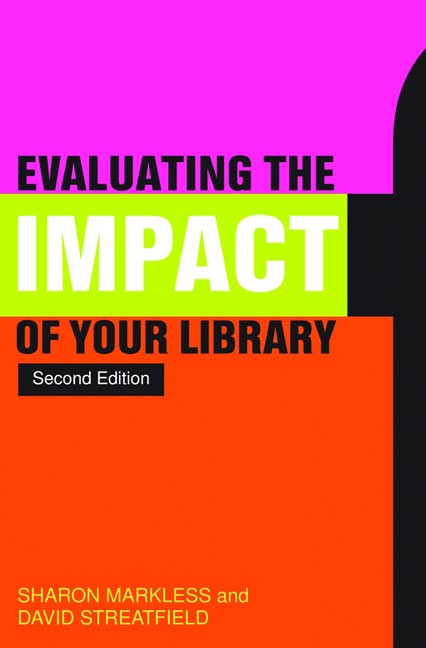Book contents
- Frontmatter
- Dedication
- Contents
- Introduction
- About the authors
- Impact and all that: use of some key terms in this book
- Part 1 The Context
- Part 2 Evaluating Impact
- 4 Putting the impact into planning
- 5 Getting things clear: objectives
- 6 Success criteria and impact indicators: how you know you are making a difference
- 7 Making things happen: activities and process indicators
- 8 Thinking about evidence
- 9 Gathering and interpreting evidence
- 10 Taking stock, setting targets and development planning
- Part 3 The Bigger Picture
- References
- Notes
- Index
- Evaluating and Measuring the Value, Use and Impact of Digital Collections
- Measuring Library Performance
- Miscellaneous Endmatter
5 - Getting things clear: objectives
from Part 2 - Evaluating Impact
Published online by Cambridge University Press: 08 June 2018
- Frontmatter
- Dedication
- Contents
- Introduction
- About the authors
- Impact and all that: use of some key terms in this book
- Part 1 The Context
- Part 2 Evaluating Impact
- 4 Putting the impact into planning
- 5 Getting things clear: objectives
- 6 Success criteria and impact indicators: how you know you are making a difference
- 7 Making things happen: activities and process indicators
- 8 Thinking about evidence
- 9 Gathering and interpreting evidence
- 10 Taking stock, setting targets and development planning
- Part 3 The Bigger Picture
- References
- Notes
- Index
- Evaluating and Measuring the Value, Use and Impact of Digital Collections
- Measuring Library Performance
- Miscellaneous Endmatter
Summary
This chapter focuses on the first stage of the model and explains how to work through it when evaluating the impact of your service. Impact evaluation is essentially about three things:
• Focus – being clear about the library's purposes; what you want the service to achieve and for whom (areas of impact turned into impact objectives)
• Indicators – deciding what will tell you that change has happened
• Evidence – being able to show that change has occurred.
The first stage of the evaluation process model is about focus.
Choosing where to get involved
If you are going to be more effective you need to choose how, where and with whom to get involved. Before you can make these decisions you should start with clarifying the impact you want to make – your objectives. However, you need to do this in the real world, so spelling out the objectives should take into account what is achievable. This means making careful choices and adopting clear priorities.
The basic constraint for librarians is having to spend so much time on managing and operating the library infrastructure. This makes it difficult to step back and look critically at what the library is really trying to do: where should you concentrate your efforts? In which areas might you most fruitfully develop your service? The first step in impact evaluation calls for thought about key foci (success criteria) for your service which you can then turn into objectives.
Lack of time is not the only problem; there are also issues of logistics. For example, in education librarianship there will always be many teachers and still more students to every librarian. Moreover, both teachers and students will spend much of their time out of physical reach of librarians, in the lecture room or classroom. Who should you target and how? Again, public library services are being called on to meet more and more externally imposed demands within existing resources. What should take priority and what should be left until later? Other types of libraries will encounter variations on these two constraints.
Responding to both these constraints may well boil down to making choices about where to concentrate on being efficient (relying on traditional performance indicators to monitor performance) and where it is important to show yourselves or other people that you are being proactive and effective, rather than spreading limited time across too many initiatives.
- Type
- Chapter
- Information
- Evaluating the Impact of Your Library , pp. 69 - 78Publisher: FacetPrint publication year: 2012



